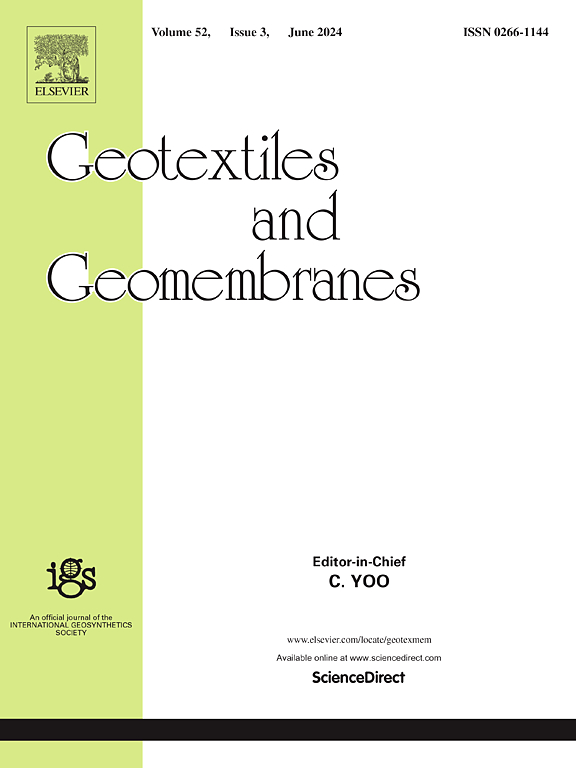人工固化结皮改善地基固结液-垂直排水
IF 6.2
1区 工程技术
Q1 ENGINEERING, GEOLOGICAL
引用次数: 0
摘要
针对人工固化壳(ASC) -垂直排水地基,提出了考虑径向和垂直渗流的解析固结解(IB解:以ASC为不透水边界)。证明了正交关系,大大提高了计算效率。然后对适用于asc垂直排水地基的固结方案,包括IB方案、Li等人(2025)的RDL方案(双层地基径向固结方案)、Tang和Onitsuka(2001)的准严格方案进行了比较和讨论。与拟严格解相比,IB解对固结率的估计略高,但在工程上可以推广,原因如下:a)收敛性更容易实现;B)其精度不受垂直时间因子与径向时间因子之比的影响;c) ASC常用主要参数(即厚度和渗透率)对适用性影响不大。忽略土中的竖向渗流,IB解退化为简化解。简化解计算出的固结速率比IB解计算出的固结速率要慢,可以作为一种简便的估算asc -竖向排水地基固结特性的方法。本文章由计算机程序翻译,如有差异,请以英文原文为准。
Consolidation solution of ground improved with artificial solidified crust–vertical drain
For artificial solidified crust (ASC)–vertical drain ground, an analytical consolidation solution (IB solution: regarding ASC as an impervious boundary) is proposed, which considers both the radial and vertical seepage. The orthogonal relation is proven and the computing efficiency is greatly improved. Then, consolidation solutions applicable to ASC–vertical drain ground, include IB solution, RDL solution (radial consolidation solution of double-layered ground) by Li et al. (2025), the quasi-rigorous solution by Tang and Onitsuka (2001), are compared and discussed. Compared to the quasi-rigorous solution, IB solution slightly overestimates the consolidation rate, but it can be promoted in engineering according to the following reasons: a) the convergence is easier to be achieved; b) its accuracy is not affected by the ratio of the vertical time factor to the radial time factor; c) common major parameters of ASC (i.e., thickness and permeability) have little effect on the applicability. By ignoring the vertical seepage in soil, IB solution degenerates to the simplified solution. Consolidation rate calculated by the simplified solution is slower than that of IB solution, and the solution can be a simple method for estimating the consolidation behavior of ASC–vertical drain ground.
求助全文
通过发布文献求助,成功后即可免费获取论文全文。
去求助
来源期刊

Geotextiles and Geomembranes
地学-地球科学综合
CiteScore
9.50
自引率
21.20%
发文量
111
审稿时长
59 days
期刊介绍:
The range of products and their applications has expanded rapidly over the last decade with geotextiles and geomembranes being specified world wide. This rapid growth is paralleled by a virtual explosion of technology. Current reference books and even manufacturers' sponsored publications tend to date very quickly and the need for a vehicle to bring together and discuss the growing body of technology now available has become evident.
Geotextiles and Geomembranes fills this need and provides a forum for the dissemination of information amongst research workers, designers, users and manufacturers. By providing a growing fund of information the journal increases general awareness, prompts further research and assists in the establishment of international codes and regulations.
 求助内容:
求助内容: 应助结果提醒方式:
应助结果提醒方式:


